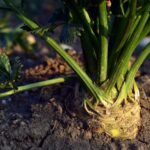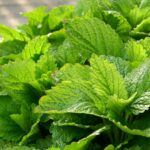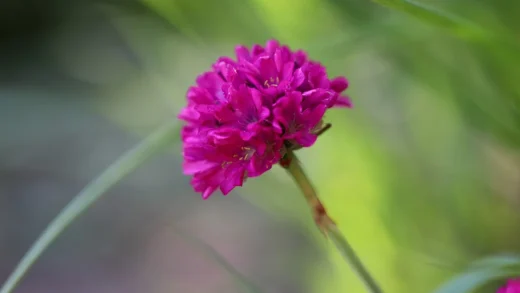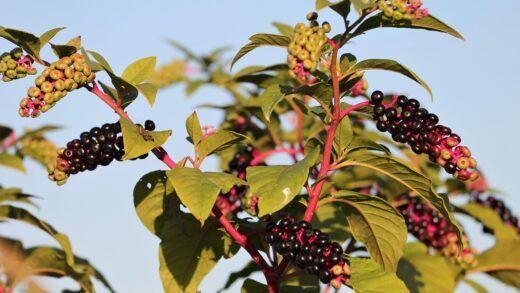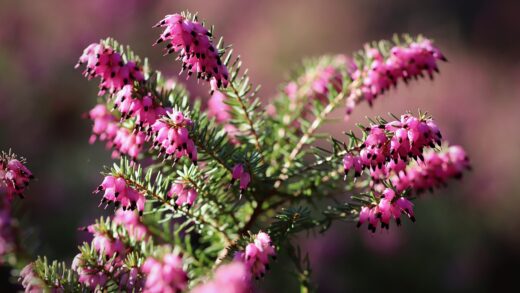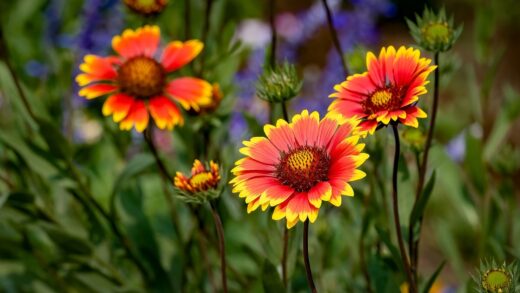Providing the appropriate amount of water is a critical aspect of cultivating healthy rose campion, yet it is a practice governed by the principle of ‘less is more’. This plant, with its origins in the sun-drenched, rocky slopes of southeastern Europe, has evolved to thrive in conditions of relative dryness. Its silvery, pubescent foliage is a clear botanical indicator of its adaptation to minimize water loss, making it an exemplary candidate for xeriscaping and low-water gardens. A thorough understanding of its water needs throughout its life cycle—from germination to established maturity—is essential for avoiding the common pitfalls of overwatering that can lead to fatal root diseases.
The irrigation strategy for rose campion is fundamentally a tale of two distinct phases: the establishment period and the mature phase. During the initial weeks and months after planting, whether from seed or as a transplant, the plant requires consistent and regular moisture to develop a deep and extensive root system. This early attention to watering provides the foundation for its future resilience. However, once this foundation is built and the plant is well-established, its water requirements decrease dramatically. It is at this point that the gardener’s approach must shift from frequent nurturing to a more hands-off, observational style of irrigation.
The primary danger in watering rose campion is providing too much moisture, particularly in soils that do not drain quickly. The crown and roots are highly susceptible to fungal pathogens that flourish in anaerobic, waterlogged conditions. Consequently, the most important rule of irrigation for this species is to allow the soil to dry out completely between waterings. This principle applies even during the hottest parts of the summer. The plant will often show signs of temporary wilting in extreme heat, but this should not be mistaken for thirst unless the soil is bone dry several inches below the surface.
Ultimately, successful irrigation management for rose campion involves a keen sense of observation and an understanding of the interplay between soil type, climate, and the plant’s growth stage. Rather than adhering to a rigid watering schedule, the focus should be on assessing the actual moisture content of the soil and responding accordingly. By prioritizing excellent drainage and exercising restraint with the watering can, gardeners can ensure their rose campion remains a vibrant and healthy component of the garden landscape, capable of withstanding periods of drought with remarkable grace.
Water needs during establishment
During the initial phase of growth, rose campion has a moderate but critical need for water. This period, which spans from seed germination through the first full growing season, is when the plant is investing its energy in creating a robust root structure. It is this underground network that will ultimately support the plant and provide the drought tolerance for which it is known. Therefore, ensuring adequate moisture during establishment is a crucial investment in the plant’s long-term health and vigour.
More articles on this topic
For newly sown seeds, the soil surface must be kept consistently moist to facilitate germination. Since the seeds are sown on the surface and require light, they are prone to drying out quickly. Using a fine mist sprayer is the ideal way to water, as it provides moisture without dislodging the tiny seeds. This gentle, consistent dampness should be maintained until the seedlings are well-rooted. For young transplants, the goal is to keep the entire root ball and the surrounding soil evenly moist, but never soggy, for the first few weeks after planting.
As the young plants begin to show signs of new growth, the frequency of watering can be gradually reduced. This encourages the roots to grow deeper into the soil in search of moisture, which is a key part of the establishment process. Instead of light, daily sprinklings, it is better to provide a deeper, more thorough watering every few days, allowing the top inch or two of soil to dry out in between. This method promotes strong root development and begins to acclimate the plant to the drier conditions it prefers once mature.
Throughout this first season, it is important to monitor the plants and the soil moisture regularly. A simple finger test—inserting a finger a few inches into the soil—is an effective way to gauge the need for water. If the soil feels dry at that depth, it is time to water. This observational approach is far more effective than a fixed schedule, as it allows for adjustments based on weather conditions such as rainfall, temperature, and wind, all of which affect the rate at which the soil dries out.
Irrigating mature plants
Once a rose campion plant has successfully navigated its first year and is considered established, its water requirements change significantly. The deep root system developed during the establishment phase now allows it to access moisture from lower soil profiles, making it exceptionally resilient to dry conditions. For mature plants, the guiding principle of irrigation should be deep but infrequent watering. This approach best mimics the natural rainfall patterns of its native Mediterranean-type climate, which often involve long dry periods punctuated by occasional, heavy downpours.
More articles on this topic
In many temperate climates, established rose campion may require little to no supplemental irrigation at all, thriving on natural rainfall alone. The need for watering will primarily arise during extended periods of drought, especially when combined with high temperatures. Even in these conditions, it is crucial to resist the urge to water too frequently. Wait until the plant shows subtle signs of stress, such as a slight drooping of the leaves that does not recover in the cooler evening hours. When it is time to water, do so thoroughly, ensuring the moisture penetrates deep into the soil to reach the entire root zone.
The method of water application is also important. Applying water directly to the base of the plant, using a soaker hose or drip irrigation, is far superior to overhead watering. This technique delivers water directly to the roots where it is needed, minimizing evaporation and, crucially, keeping the foliage dry. Wet foliage, especially in humid conditions, can increase the risk of fungal diseases like powdery mildew. Watering in the early morning is also preferable, as it allows any moisture that does get on the leaves to dry quickly as the sun rises.
It is critical to remember that the most common cause of failure in mature rose campion is overwatering, which leads to root and crown rot. The plant is far more likely to be harmed by excessive kindness in the form of too much water than by a period of neglect. Always err on the side of caution and ensure the soil has dried out to a depth of several inches before even considering supplemental irrigation. This disciplined approach is the secret to maintaining a healthy, long-lived clump of rose campion.
The role of soil and drainage
The discussion of rose campion’s water requirements cannot be separated from the topic of soil composition and drainage. The type of soil in which the plant is grown has a profound impact on how water is retained and, consequently, on the required irrigation frequency. The plant’s innate preference for dry conditions is, in reality, a preference for soil that does not hold onto excess water. Therefore, creating the right soil environment is the most proactive and effective irrigation strategy.
In an ideal, well-draining, sandy or gravelly loam, water passes through the upper layers of the soil relatively quickly, preventing the crown of the plant from sitting in saturated conditions. This type of soil structure allows the gardener to provide a deep soaking when necessary, confident that the excess water will drain away, leaving the soil moist but not waterlogged. In such conditions, the risk of root rot is minimal, and the plant can develop a healthy, far-reaching root system.
Conversely, in heavy clay soils that are dense and poorly draining, water management becomes much more challenging. Clay soils can become saturated for long periods after watering or heavy rain, creating the anaerobic conditions that are fatal to rose campion. In these situations, even infrequent watering can be problematic. This is why amending heavy soil with grit and organic matter before planting is so crucial. If the soil cannot be sufficiently improved, planting in raised beds or on mounds is an excellent alternative, as it physically elevates the root crown above the surrounding water table.
Mulching can also play a role in the plant’s water relations. While organic mulches like bark chips are often used to conserve moisture, they can be detrimental to rose campion by holding too much water against the stem and crown. A better choice is an inorganic mulch, such as a layer of pea gravel or crushed stone. This type of mulch helps to suppress weeds and keep the soil cool, but it also provides a dry, well-ventilated surface around the base of the plant, wicking away excess moisture and discouraging rot.
Recognizing signs of water stress
Being able to accurately interpret the physical signals of the rose campion plant is key to providing water appropriately. Both underwatering and overwatering can cause visible stress, and it is important for the gardener to be able to distinguish between them. An underwatered plant, particularly during a prolonged drought, will exhibit wilting or drooping leaves. The silvery foliage may also begin to look dull and may start to yellow and dry out, beginning with the lower leaves first. These are clear signs that the plant is unable to draw sufficient moisture from the soil and that a deep, thorough watering is required.
It is important, however, to differentiate between drought-induced wilting and temporary wilting due to midday heat. On very hot, sunny days, it is normal for plants to lose water through transpiration faster than their roots can absorb it, causing them to wilt. This is a temporary condition, and the plant will typically recover and look turgid again as temperatures cool in the evening. Watering a plant that is only temporarily heat-stressed can contribute to overwatering. The true test is whether the plant remains wilted in the morning.
The signs of overwatering can be deceptively similar but are far more dangerous. An overwatered rose campion may also show yellowing leaves and wilting. However, this wilting occurs because the roots are drowning and starting to rot, rendering them unable to absorb water and nutrients, even though the soil is saturated. The key difference to look for is the condition of the soil. If the plant is wilting and the soil is damp or wet, overwatering is the certain culprit. The base of the plant may also become soft and mushy, indicating that crown rot has set in, a condition which is unfortunately irreversible.
Ultimately, the best approach is proactive prevention. By providing excellent drainage from the start and adopting a conservative watering schedule, the risk of water-related stress is significantly minimized. Regularly checking the soil moisture with a finger or a trowel before watering is the most reliable method to ensure that the plant receives irrigation only when it is truly needed. This careful and observant approach to watering is fundamental to the successful cultivation of this resilient and beautiful perennial.








